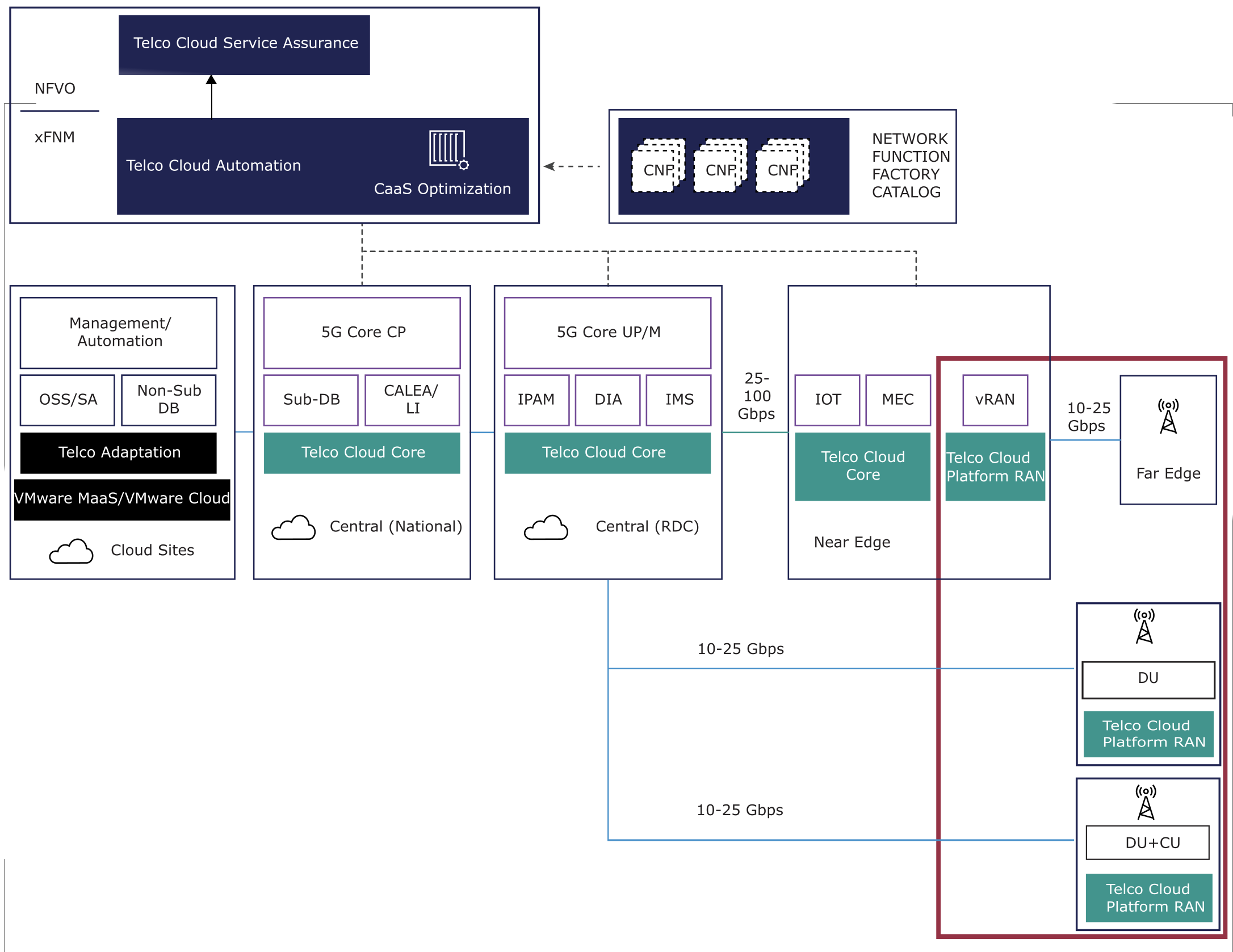The 5G network must be dynamic and programmable to meet the defined business objectives.
To handle the massive amount of data traffic, 5G is designed to separate the user plane from the control plane and to distribute the user plane as close to the device as possible. As the user traffic increases, an operator can add more user plane services without changing the control plane capacity. This distributed architecture can be realized by constructing the data center and network infrastructure based on hierarchical layers.
A hierarchical model allows Telcos to scale their 5G deployment based on application requirements and user load. Modern Telco architecture consists of four levels of hierarchy. 5G Subscriber databases, data repositories, resource orchestration, and service assurance are typically hosted in the national data centers. The national data centers also serve as peering points for lawful intercept points. For added redundancy, a pair of national data centers must be deployed in geographically diverse sites.

Aggregation Data Centers:
Subtending from national data centers are regional data centers. Regional data centers host the 5G core user plane function, voice services functions, and non-call processing infrastructure such as IPAM, DNS, and NTP servers. Inbound and outbound roaming traffic can also be routed from the regional data center.
To support new applications and devices that require ultra-low latency and high throughput networks, CSPs have an opportunity to push the 5G user-plane closer to the application edge. At the same time, RAN disaggregation enables efficient hardware utilization and pooling gain, and increases deployment flexibility while reducing the Capital Expenditure (CAPEX) / Operational Expenditure (OPEX) of Radio Access.
Aggregation data centers such as national, regional, and near edge data centers can be architected by following Telco Cloud Platform 5G core recommendations, while the cell site architecture and implementation align with VMware Telco Cloud Platform RAN.